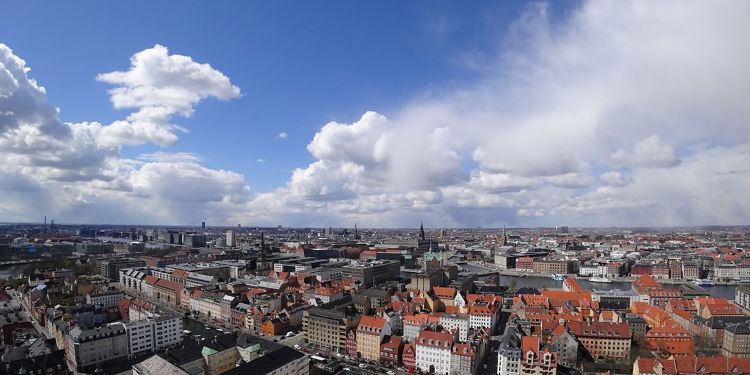In January 2024, Professors Willy Shih and Mike Toffel led 45 HBS MBA students on site visits to witness the energy transition and innovative sustainable production activities throughout Denmark and the Netherlands, in the second year of their Immersive Field Course (IFC). This is one of nine student essays that highlight their reflections.
During our Immersive Field Course (IFC), we visited two sites at the center of Denmark’s district heat systems: the Amager Bakke (Copenhill) facility in Copenhagen, and Fjernvarme Fyn, a municipality-owned district heating facility in Odense that serves one of the largest district heating grids in the world, supplying 97% of residential heating needs in the Odense and Otterup areas.

At Fjernvarme Fyn, we toured the central production facility. One of the key selling points of district heating is its optionality and efficiency. At Fjernvarme Fyn, the system is equipped to produce heat and power using a combination of waste, wood chips, and straw incineration, supplemented by less environmentally friendly options like coal when demand exceeds supply. As electricity prices fluctuate, Fjernvarme Fyn can adjust their production to help stabilize utility pricing for their customers. For instance, if electricity prices are low, the company will produce heat and store it within their storage ponds for use when electricity prices are high. Interestingly, Fjernvarme Fyn also gets paid to process waste heat from nearby companies. The facility has long-term plans to replace the coal-fired power plant with a new biogas plant, and is building capabilities for carbon storage – further cementing the utility’s goal in achieving net-negative carbon emissions.
Afterwards, we took a short field trip to tour the new heat recovery facility built adjacent to a nearby Meta data center. Servers working to power our computing needs produce enormous quanitities of waste heat every year, and the Meta facility has a goal of recovering 100,000 MWh of that energy annually. The data center in Odense produces what is colloquially known as “low quality heat”, which is heat below 50 ºC. District heating requires “high quality heat”, which is above 80 ºC. Waste heat is captured from the air at the data center and used to heat water, which is then routed across the road to a heat recovery center. There the low-grade heat is upgraded with large commercial heat pumps, and the resulting high-grade heat is routed to the district heating system which serve a local hospital, nearby buildings, and numerous homes. The chilled water coming out of the heat pump station is sent back across the road to Meta, reducing their cooling costs. Another fun fact about this integrated system is that Fjernvarme Fyn does not pay for the surplus heat from Meta!

Overall, we have been impressed with all the thoughtful planning, foresight, and innovation we have seen on our field trip through Denmark and the Netherlands and have learned a lot about the applications of district heating. We are optimistic and hopeful for what this technology can do for the fight against climate change!


